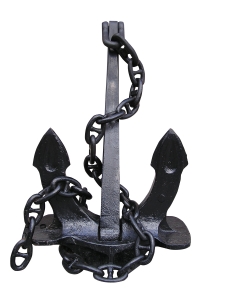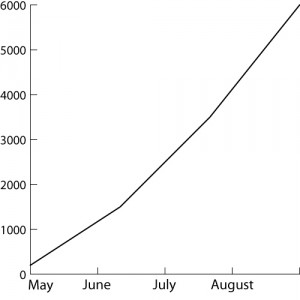I talked about link value last year but I thought I’d go a few steps further and add to that, covering how Google values links nowadays when link building isn’t the center of attention or the entire game that it once was.
Google and Links
Total Amount – First and foremost, Google considers the total number of links which you have. This isn’t a particularly influential factor considering one good link from a high ranking, established, trustworthy site (more on this later) will be more valuable than thousands of spammy, low quality site links.
# of Domains/Source – If you have thousands of links from the same site then it’s not really going to be helping you. For instance, if the majority of your links were all coming from the same article directory, Google is going to discount the influence of most of those links. Some people argue that Google discounts influence after the first link from a particular site. Therefore, link diversity is extremely important, so you should be getting links from all types of sites from directories to blogs to video sites and so on.
They can identify where your links are coming from not just from the sites themselves but through varied IP addresses, so you definitely want your links coming from different IP addresses around the globe as this suggests you’re getting links from different people.
Anchor Text – I’ve talked a lot about anchor text lately in terms of how important it is to vary up the anchor text which you use when creating links to your site. This works to keep your link profile diverse and natural looking because you have to think that if someone was linking to your site from their site, they likely wouldn’t use the keyword you’re targeting on that page when pointing to your site. 
Therefore, if you’re using too much when creating links to your site then it will look artificial and could hurt more than it helps. Consider my post on the 3 types of anchor text to see what it means to vary your anchor text effectively.
Age – While some people believe that older links, links you’ve had for years pointing to your site, are more valuable and powerful than newer links you receive, when I refer to “age” here I’m referring to the age of the sites you’re receiving links from. Older more established sites’ links will be more influential whereas links from newer sites won’t make as much of an impact. This goes with the idea that older sites have more authority and page rank and Google trusts them more.
Variation – I’ll include “variation” here to once more drive home the point that diversity is important in terms of anchor text and source of links. It doesn’t stop there, however; variation is important in terms of image versus text, placement of the links on the various sites linking to you (high up in the content is best as oppposed to sidebars or menu bars which are signs of link buying or exchanges), and dofollow versus nofollow links, as well.
Years ago, Google said that only DoFollow links would pass influence. After hearing that, everyone began concentrating entirely on DoFollow and discounting going after NoFollow links altogether. While a lot of webmasters still focus entirely on DoFollow, a lot of SEOers believe that NoFollow links pass more influence than they used to because Google will do what they can to diminish the success which those who are trying to game or play to Google’s algorithm receive and reward those who are not. This is just an example which you can use to anticipate and predict what works in SEO.
Quality – Quality is still a factor as I mentioned in opening. Receiving one link from a highly ranked and trusted site is far more valuable than thousands of links from spammy blogs. If you are going to spend your time trying to get links, you want to focus on getting links from highly trusted and established sites which it’s difficult to receive links from because they’re more conservative in whom they link to. In this case it’s less about “getting” links and more about “earning” links through techniques like creating and sharing link bait or guest blogging for them.
Another sign of quality is relevance, in that you want links from sites which are relevant to your site. If you’re getting a link from a site about cars when your site is all about puppies, Google is likely going to discount the influence that link has as it is very likely that you created that link yourself because typically a webmaster of a car site would not link to your puppy themed site on their own. In keeping with the variation point, it’s alright to have a few links from irrelevant sites, but generally you’ll be keeping in your niche.
Bad Links – On the other hand, the opposite of quality links, bad links will detract from and have an adverse affect on your ranking, so do what you can to limit the number of bad links pointing to your site.
Velocity – Link velocity refers to the rate and schedule at which you’re building links to your site. The key here is to make your link velocity look natural or in other words you shouldn’t get 10000 links one month then 100 then next month. There shouldn’t be many curves in your velocity, you should continue to build more links each month than the one before it.
